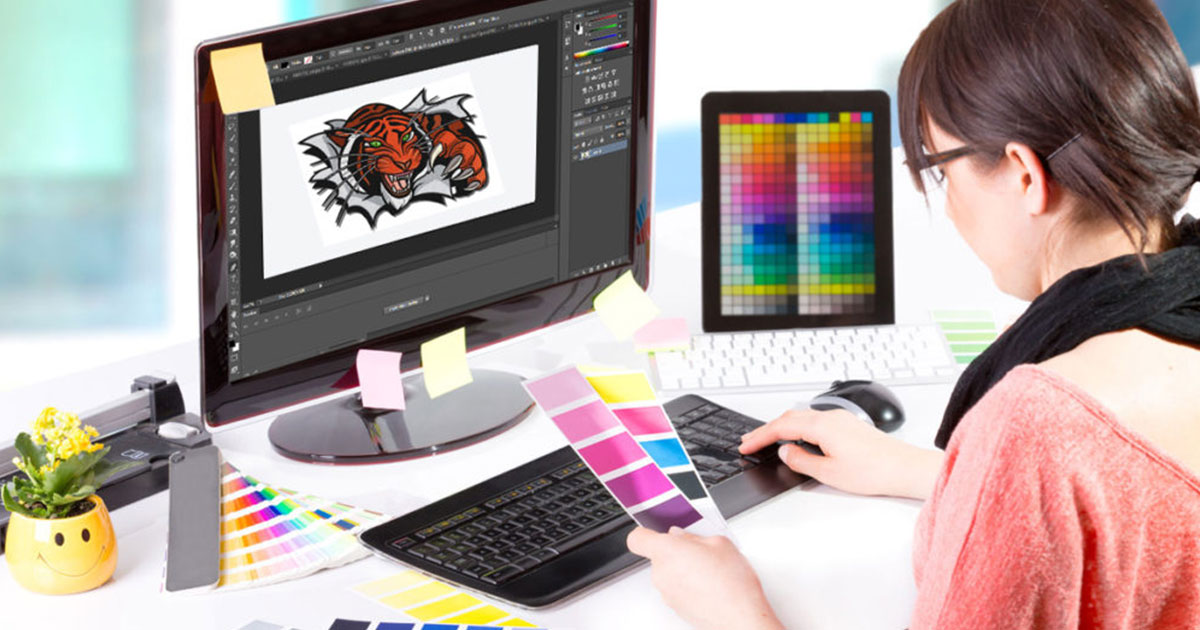Ideal Digitizing for Embroidery: Improve Your Projects
Wiki Article
Understanding the Embroidery Digitizing Refine: Your Ultimate Overview
Needlework digitizing is a thorough craft that calls for precision and competence to translate intricate styles right into digital styles for maker needlework. As artisans start this journey to understand the needlework digitizing process, a detailed understanding of the basics sets the structure for quality. Past the simple expertise exists a realm of sophisticated software application, specialized devices, and nuanced methods waiting to be discovered. By diving into the subtleties of digitizing, one can open a globe of imaginative possibilities and boost their needlework jobs to brand-new heights.
Recognizing Needlework Digitizing Basics
Needlework digitizing essentials form the structure upon which complex styles are equated right into machine-readable styles for precise stitching. This preliminary action in the needlework digitizing procedure is essential for making certain that the final stitched product is a faithful representation of the initial layout. Understanding needlework digitizing basics includes grasping vital ideas such as stitch kinds, stitch instructions, density, rug, and pull settlement.Sew types play an essential duty in identifying the aesthetic and textural end result of the stitched design. By selecting the suitable stitch kind, whether it be satin, fill, or running stitch, digitizers can accomplish the wanted result and boost the general quality of the needlework. Additionally, stitch instructions influences the circulation and dimension of the design, while thickness establishes the spacing and coverage of the stitches.
In addition, padding sewing gives security to the style by safeguarding the material and protecting against distortion throughout the embroidery process. Pull compensation is another crucial consideration to neutralize the all-natural tendency of textile to agreement when sewn. Understanding these embroidery digitizing basics is fundamental for creating professional-quality embroidered products.
Picking the Right Digitizing Software Application
Picking the proper digitizing software is a vital choice that substantially influences the efficiency and quality of the needlework digitizing procedure. Digitizing for Embroidery. When choosing the right digitizing software, it is important to consider variables such as the complexity of styles you plan to develop, the user-friendliness of the software application, the degree of customer assistance supplied, and the compatibility with your needlework equipmentThere are various digitizing software application options readily available on the market, varying from standard programs for newbies to advanced software program for specialist digitizers. Some prominent choices consist of Wilcom EmbroideryStudio, Hatch Embroidery Software Application, and PulseID. These software supply a vast array of tools and functions to assist you produce complex designs with ease.
Prior to deciding, it is advisable to explore the different software program options via complimentary trials or demos to figure out which one finest fits your needs. Furthermore, reading reviews and seeking recommendations from knowledgeable digitizers can provide beneficial understandings into the strengths and weak points of each software (Digitizing for Embroidery). By carefully examining your requirements and contrasting the features of different digitizing software program, you can make an educated choice that improves your needlework digitizing workflow
Digitizing Devices and Techniques

Optimizing Layout Setup for Needlework
Grasping the complexities of design settings is essential in achieving optimum lead to the needlework digitizing procedure, building upon the structure laid by comprehending digitizing tools and strategies. When enhancing layout settings for embroidery, it is necessary to take into consideration aspects such as stitch type, density, padding, pull compensation, and registration. Stitch type choice affects the total look of the style, with alternatives like satin, fill, and running stitches supplying various textures and results. Density refers to the spacing and you could look here density of stitches, influencing the layout's insurance coverage and toughness. Correct rug stitching offers stability and stops material distortion, specifically for complex styles or on elastic products. Pull compensation adjusts for material stretch throughout stitching, guaranteeing accurate layout duplication. Registration setups straighten different elements of the style accurately, keeping total design stability. By fine-tuning these layout setups, embroiderers can enhance the quality and accuracy of their stitched creations.
Troubleshooting Common Digitizing Issues
When encountering typical digitizing problems during the needlework procedure, it is essential to recognize the source and execute effective services quickly. One typical problem is stitch thickness problems, where stitches may be as well thick, creating the textile to pucker, or also sporadic, leading to spaces in the layout. Changing the stitch density setups in the digitizing software can assist settle this problem.Another regular difficulty is string breaks during the embroidery process. This can take place due to different factors such as inaccurate tension setups, dull needles, or making use of low-grade thread. Making certain proper maintenance of the needlework equipment, consisting of regular needle modifications and stress modifications, can minimize the event of string breaks.
Additionally, style registration errors can cause misaligned aspects within Visit Website the needlework design. Examining the layout alignment in the digitizing software application and making necessary modifications before stitching can help in preventing this problem. By dealing with these common digitizing concerns promptly and successfully, you can guarantee a smoother embroidery process and premium completed products.
Conclusion
In final thought, understanding the embroidery digitizing process calls for a strong understanding of the basics, the right selection of software program, and knowledge of devices and strategies. Optimizing style setups and troubleshooting typical digitizing issues are essential steps in ensuring top notch needlework outcomes. By adhering to these steps vigilantly, one can attain accuracy and efficiency in the digitizing process.Report this wiki page